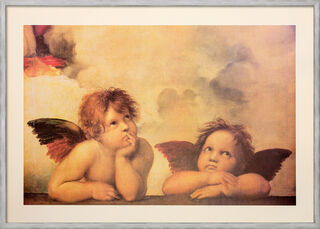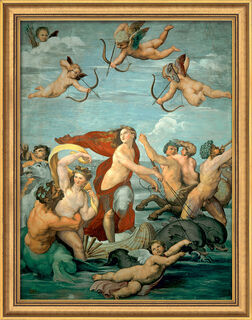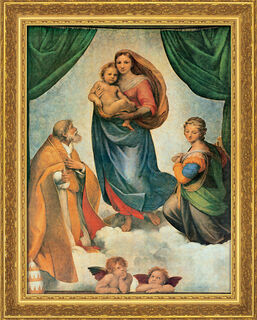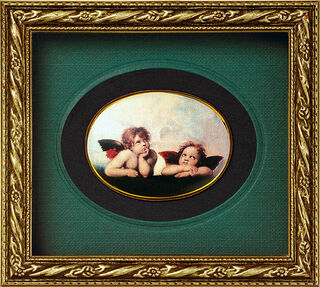Raffaelo Santi
Raffaello Santi was probably born around 1483 in Urbino, Italy. He received his first training from his father, a court painter in his hometown. For a short time, he was a student of Perugino in Perugia, then in 1504 he went to Florence and in 1508 finally to Rome. From 1511 onwards, he was the construction director of St. Peter's Basilica and curator of the ancient monuments. His burial in 1520 in the Pantheon testifies to the high esteem in which he was held by his contemporaries.
The years Raphael spent in Florence, also known as the "Florentine period" had a great influence. During these years, he studied the art of da Vinci and Michelangelo and was able to integrate them into his own style. Numerous nude studies speak of his striving to perfect the human anatomy. He was then able to demonstrate all his talent in the decoration of the Vatican representative rooms. The wall and ceiling paintings of the Stanza della Signatura, with their depictions of theology, philosophy, poetry and law, became a synthesis of ancient thought and Christian religion, a key work in European cultural history.
Apart from the Vatican, Agostino Chigi was Raphael's most important private client. The artist undertook the decoration of the family chapel and the Villa Farnesina.
Raphael sought to create a unity between painting and architecture. Few figures, illusion of depth and new colour contrasts became the binding model for future generations of painters. The monumental altarpiece of the "Sistine Madonna", painted around 1514, is particularly central. In addition to the Madonnas and religious paintings, he also created portraits, which became the official type of portrait due to their representative appearance.




